Matador Network's Blog, page 1185
January 10, 2019
Most popular Netflix shows by state

If you’re looking for a new Netflix binge but you don’t quite trust your friends’ recommendations, you might want to check out this map of every state’s favorite show. The map was compiled by the team at HighSpeedInternet.com, which used Google Trends to find and rank the most searched Netflix show in each state. While all the shows are relatively popular nationwide, it’s interesting to look at the map and note a few obvious trends.

Photo: HighSpeedInternet.com
13 Reasons Why was America’s favorite Netflix show of 2018, winning the top spot in seven states. In general, though, states seem to prefer shows that are set in the local area. New Mexico, for example, had a tie between its two favorite shows — Breaking Bad and Better Call Saul — both of which take place in the state. Stranger Things didn’t win its home state of Indiana, but it did appeal to states in the midwest like Nebraska, Utah, Colorado, and Idaho. While you might think House of Cards would win Washington DC in a landslide, it actually shared top honors with 15 other shows in an astonishing 16-way tie.
With the exception of Vermont, which prefers Comedians in Cars Getting Coffee, it’s pretty clear that the US loves its drama and crime thrillers. The map is dominated by intense shows with heavy, dark themes. This is a notable change from last year when Gilmore Girls, Star Trek, and American Vandal won out in many states. 

More like this: The 25 coolest towns in America: 2018
The post This map shows the most popular Netflix show in every state appeared first on Matador Network.

Best waffle shops in Brussels

Embracing the local food and eating traditions while you’re traveling is, without a doubt, one of the best ways to understand another culture. In Belgium, that means eating waffles the Belgian way — or, one might say, the right way.
It’s not all about shoving a deliciously warm waffle in your face. While there may not be an exact set of rules, it’s clear when visiting Brussels that there’s a specific way to experience the “real deal.” Before explaining what that means, though, it’s important to clarify what a Belgian waffle really is, because it’s nothing like Eleven’s cherished Eggos. Belgian waffles are made with a light, fluffy batter, and have deep square grooves. They’re traditionally made with yeast, which gives them that airy quality, and pressed with a special waffle iron to give them the proper shape.
Belgian waffle making dates back to the Middle Ages, when vendors would sell them as street food snacks outside of churches. In short, the Belgians know their waffles. And, consequently, the right way to eat them. Spoiler alert: It doesn’t involve towers of whipped cream.
Note: There are two types of Belgian waffles. There’s Brussels-style and Liège-style waffles, which have an extra dose of pearl sugar. The rules here apply to both.
What time of day to eat Belgian waffles
If you’re anything like most people, your mind goes directly to breakfast when you think about waffles. Not so with the Belgians. Waffles are a dessert or tea time treat enjoyed in that period of time that’s long after lunch but too early for dinner. You may crave a waffle at all times of the day, but you’ll lose your chance at feeling like a true local unless you stick to midday waffle eating.
Drop the maple syrup

Photo: Bogoshipda/Shutterstock
Real Brussels waffles are rectangular with those classic deep squares that look perfect for holding lakes of syrup. Wrong. Don’t do that. For an authentic Brussels waffle, the authenticity is in simplicity. No syrup here, folks. Maple syrup originally comes from North America, and it remains a North American waffle topping.
Be careful what you top with
Keep it simple. The proper way to adorn your waffle is, well, with almost nothing. Most Belgians order their waffles decorated with a generous dusting of powdered sugar and nothing else. Liège waffles are already sweet from the extra sugar, and need nothing else. On occasion, a bit of whipped cream or melted chocolate may be added to either (key words: “a bit”). The point is, the waffle shouldn’t be heavy, sitting like a rock in your stomach shortly after consuming. It should be light, satisfying, warm, and a perfect balance of crisp and soft. Too many moist toppings lead to floppy waffles.
What you need to avoid
Don’t try and stand in the street while eating. Savor your waffle sitting down. Also, choose wisely where you get your treat. In Brussels, ordering a waffle buried under loads of toppings from one of those brightly-lit streetside stops is considered more of a tourist thing. However, no one is going to get kicked out of Brussels for using a waffle as a vehicle for a pound of cherries and chocolate. Just know that in doing so you’re eating waffles like an American in Belgium, not like a local.
Where to find the best waffles in Brussels
Of course, to truly eat waffles as the Belgians do, you need to do it in Belgium. Brussels is a fantastic place to start.

Photo: Maison Dandoy/Facebook
Maison Dandoy — A shop that’s famous for a reason. The waffles here are made the traditional way, using a recipe from the owner’s great-great-great-grandfather. Both Brussels and Liège styles can be found here. You’ll also be able to get a glimpse of the waffle making action when you walk in the shop and have the sweet smell waft around you.
Location: Various locations, with a main tea room in the center of the city at Rue Charles Buls, 14, 1000 Bruxelles

Photo: Galeries Royales Saint-Hubert/Facebook
Mokafé — A centrally located classic in the King’s Gallery that’s been open for four generations. The waffles are what puts it on the list here, but there are plenty of other savory specialties like shrimp croquettes and carbonnades flamandes for when you’ve eaten one too many waffles.
Location: Galerie du Roi 9, 1000 Bruxelles, Belgium

Photo: Bozar Restaurant/Facebook
Bozar Restaurant — For fine waffle dining (or fine dining in general) this Michelin-starred restaurant serves waffles with a side of fancy.
Location: Rue Ravenstein 23, 1000 Bruxelles, Belgium 

More like this: The 7 most interesting things people put on toast around the world
The post The art of eating waffles like a local in Belgium appeared first on Matador Network.

Scottish Dramathon is a whisky race

When preparing for a marathon, most runners spend months getting in shape and sticking to a healthy diet. Those who strictly adhere to this regimen may not be interested in this unique Scottish marathon, but those who love whisky certainly will be. In October 2019, the third annual Dramathon will take place in Strathspey, an area of Scotland well-known for its single malts production, taking runners through some of the country’s most popular distilleries.
Runners can choose to do the full 26-mile marathon, beginning at Glenfarclas distillery, a 13-mile half marathon that starts at Tamdhu distillery, or a 6.2-mile run from the Aberlour distillery. If you have a group of four, you also have the option of participating in a 26-mile relay race. All marathons end at the Glenfiddich distillery.
The route will also bring runners through the Knockando and Dalmunach distilleries. So it might not be the healthiest race, but there’s a pretty good chance you’ll finish the marathon with a healthy buzz. And at the end, runners will receive free samples of single malts before the post-race parties at the Balvenie and Glenfiddich distilleries.
The route map is available here.
Entry fees are $72 for the full marathon, $47 for the half-marathon, $40 for the 6.2-mile race, and $158 for the relay race. To register for the marathon, or learn more about what this whisky race entails, visit the Dramathon’s official website. 
H/T: Lonely Planet

More like this: Want a real resolution? Go ultrarunning in South Africa this year
The post This Scottish marathon will have you run and drink whisky appeared first on Matador Network.

January 9, 2019
Guide to the beaches of Uruguay
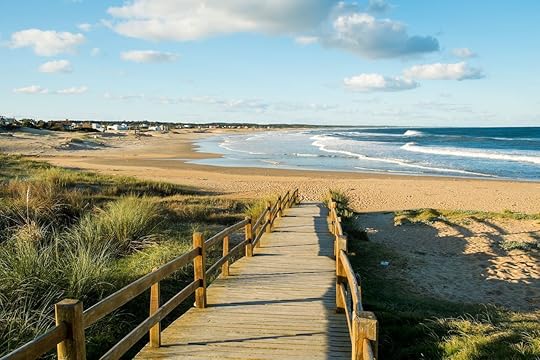
Uruguay beguiles with iconic gauchos, South American cowboys, herding cattle on its grassy plains. It inspires with its progressive social policies, having beat out Canada as the first country to legalize recreational weed. But more than anything, Uruguay beckons with its miles of sand. From empty beaches framed by pine forests to sandy stretches filled with beautiful people and thumping music, Uruguay has a beach for every type of traveler. And summer in Uruguay is happening right now, so get yourself to this tiny, charismatic country and start beach-hopping.
Uruguay by the seasons

Photo: DFLC Prints/Shutterstock
Uruguay is pretty far south, with average lows of 45-50 degrees Fahrenheit from May to September. It’s a damp, deep cold, and Uruguayans cope with winter by ducking into cafes and bookstores or sharing a hot gourd of mate tea with friends. On clear days, though, a brisk walk along the wide beachside promenades of Uruguay’s capital city, Montevideo, is a soothing reminder of warm days ahead.
In the spring months of October and November, Uruguay is transformed. Locals shed their layers and head for the shore, gathering at waterside restaurants and bars in their capital city, Montevideo. They hang out in parks at weekend markets or gather with their extended families for parilladas, barbecues of every type of meat imaginable, eating outside while uncorking bottles of local Tannat wines or Argentine Malbecs.
Not until the first of December does the Uruguayan beach scene take off. Come that date, high temperatures reach 80 degrees Fahrenheit, and the resort towns of Punta del Este and José Ignacio explode with energy, filling up with Uruguayans and Argentines who arrive for summer vacation. The summer spirit lasts through early March. So if you want a party, come now. Come later, in Uruguay’s early spring, and you’ll have the same warmth and sunshine but fewer crowds and better accommodation bargains.
The beaches of Montevideo
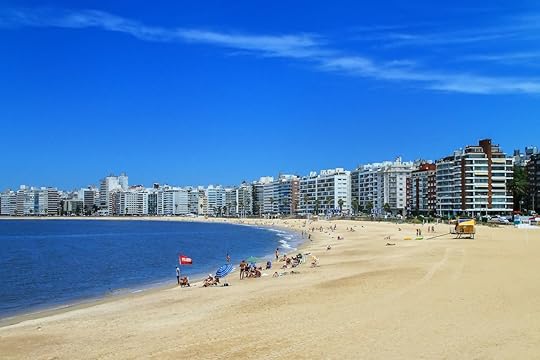
Photo: Don Mammoser/Shutterstock
Montevideo, the capital city of this tiny country of 3.5 million, is located at the mouth of the Rio de la Plata where this wide river separating it from Argentina meets the Atlantic ocean. With their mix of river and sea, the waters of Montevideo’s beaches are reddish and opaque but still draw bathers in the height of summer. Playa de los Pocitos, which shares its name with the adjacent neighborhood, is a broad beach lined with a red and white boardwalk and the cityscape behind. If your stay is limited to Montevideo, a walk along this photogenic city beach is a must.
East of Pocitos are Playa Malvín and Playa Honda. Even this short distance away from the river mouth makes the water a little clearer and bluer, although an unmistakable red-brown river tint remains. Swells hit Playa Honda more directly, bringing occasional waves and the local surfers who ride them. After that, the wealthy suburb of Carrasco fronts miles of shoreline that’s very popular on sunny days.
Atlantida and Piriapolis
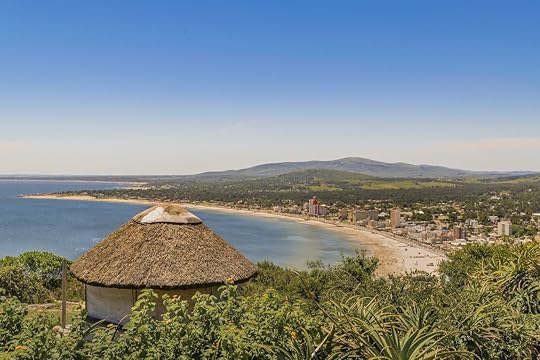
Photo: DFLC Prints/Shutterstock
As you head further east from Montevideo — and eventually north, following the coastline towards Brazil — the beaches get progressively more beautiful. The next big beach town is Punta del Este, but more on that below. Before you arrive in Punta del Este, you’ll pass the beaches of Altántida and Piriápolis, popular with local families who want to escape the city for a summer outing.
Piriapolis has a laid-back vibe, and the views from the hill overlooking the ocean are worth a photo or two. The town was once popular with wealthy Argentines, and the stately Hotel Argentino is a reminder of those heady days. It still has its grand casino, but these days the clientele is more Uruguayan. The Argentines, meanwhile, have decamped to Punta del Este and José Ignacio, where prices for everything from lodging to food are higher.
Punta Ballena and Solana del Mar
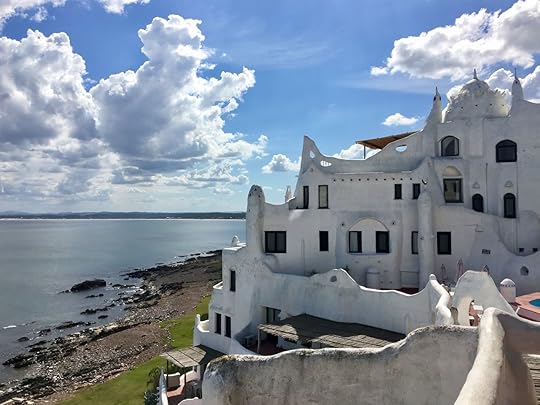
Photo: Manuel Ochoa/Shutterstock
The bustling city of Punta del Este is where Argentines who can afford it spend their summer vacations, preferring its warm waters and laid-back vibe to their own country’s beaches. Punta may be full of Miami Beach-style high-rises, but it’s surrounded by forests and offers up plenty of pristine beaches close by.
Before you arrive at the town of Punta itself, you’ll find one such beach, Solana de Mar. You can spot Solana de Mar by the hill, Punta Ballena, that overlooks it. Atop the hill is a large white house called Casa Pueblo, a sprawling version of a Greek island abode. It was once the residence of Carlos Páez Vilaró, one of Uruguay’s most famous artists, who would greet visitors to his home-cum-museum on a hill. On a visit some years ago, he recognized my Uruguayan mother from her art school days, so I found him especially charming. As to Solana de Mar beach, it’s a perfect place to take in the sunset. It’s so long, wide, and flat that it’s ideal for long walks or, so I’ve been told, a polo match.
Tame Beach, Wild Beach, and Bikini Beach

Photo: Ksenia Ragozina/Shutterstock
Punta del Este, which means Point of the East, is so-named because it’s a peninsula due east of Montevideo. The peninsula juts south into the Atlantic, creating two kinds of beach condition. On the westerly side of the peninsula, the beach is protected from cold Antarctic currents and is hence called Playa Mansa, or Tame Beach. The water is warm and waveless, making it perfect for families with kids — although you should watch out for the occasional stinging jellyfish.
Although the beach gets jammed in summer, most beachgoers don’t head out until after lunch and maybe even a siesta, meaning the crowds don’t really pick up until 3:00 PM. On the eastern side of the Punta peninsula is Playa Brava, or Wild Beach. The water is colder here but better for surfing and boogie boarding. Playa Brava is also windier, but you won’t find any jellies here — just a lot of Argentines.
Due east is a tiny beach called Playa Los Cangrejos, which you’ll find behind the Le Club hotel. You’ve left Punta’s high-rises and found your own private escape just a few minutes away; just beware the rocks on either side of this beach cove. Beyond Los Cangrejos are the Montoya and Bikini beaches. While you may have escaped the big buildings here, on hot afternoons the sand is packed with cool, young Uruguayans and Argentines playing paddle, flirting, drinking, and listing to very loud music.
·
José Ignacio
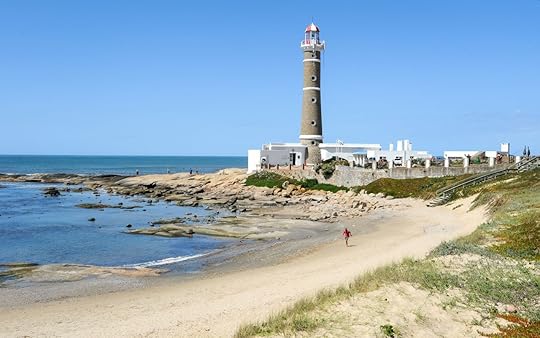
Photo: Stefano Ember/Shutterstock
This small, hip, town started drawing celebrities from North America well over a decade ago. While you could shell out hundreds a night to stay at its poshest ocean-view inns, you can also find hostels and lodges for much less just a few roads in from the shore.
Confusingly, José Ignacio also lies on a point, albeit a smaller one than Punta del Este, and hence has beaches with the same “tame” and “wild” names. José Ignacio’s Playa Mansa, unlike Punta’s Playa Mansa, lives up to its name. Its waters are not quite as warm as Punta’s, but they are pretty mild and certainly wave-free. More importantly, behind this sandy cove lie grass-covered dunes and, behind them, acres of forest — not the apartments of Punta. It’s the perfect place to spend the afternoon, staying even for a lovely summer sunset.
As you’d expect, Playa Brava is windier, and the waves are stronger. It’s a good place to watch the surfers or just beautiful people in general. Before hitting the beach, stop for lunch at Parador La Huella, a celebrated restaurant that’s racked up awards. If you can’t get a table there, you’ll have lots of restaurants on the José Ignacio peninsula. Make sure to get a seat at the upstairs rooftop areas. After lunch, stop at El Faro, the lighthouse at the end of the point, for photos.
La Pedrera and Cabo Polonio
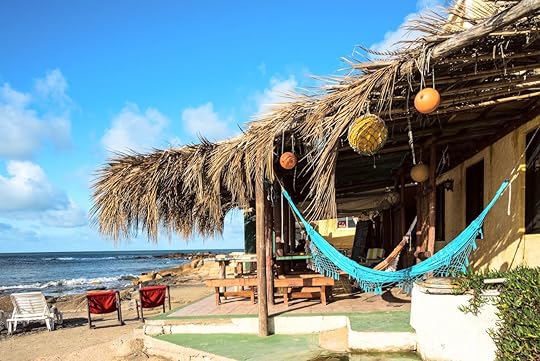
Photo: Ksenia Ragozina/Shutterstock
Beyond José Ignacio is Uruguay’s Rocha Department, home to the country’s loveliest and least-developed beaches. The first of them is La Pedrera, a resort area started by folks who’d tired of the bustle and crowds of Punta. Its wide sweeping beaches — lined by dunes, grasses, and occasional beach houses — are Playa del Desplayado, Playa Punta Rubia, and Playa Santa Isabel.
Further on is Cabo Polonio, a protected area of sand dunes and sea lions. You can either hike into the shore or buy tickets for a truck ride over the dunes. Despite the lack of electricity or running water, hippies — whom the government is trying to evict — have settled in the area over the years. Cabo Polonio’s sweeping dunes are worth a visit.
Barra de Valizas and Devil’s Point
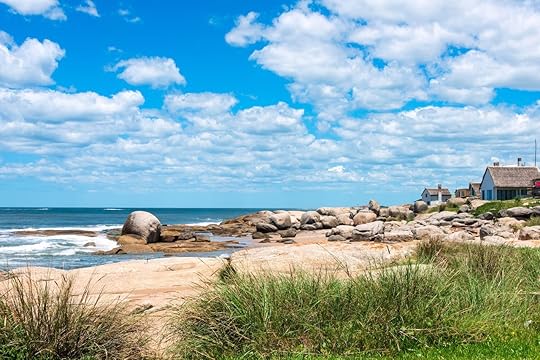
Photo: Ksenia Ragozina/Shutterstock
North of Cabo Polonio is Barra de Valizas, a long beach of fine sand but slightly rougher seas. There’s not much development in this area, but the beaches still fill up in the afternoon. The next major area is Punta del Diablo, or Devil’s Point. Not too long ago, Diablo was a low-key fishing village.
Its quaint fisherman’s houses and photogenic boats have started drawing more attention. Since hostels here are less expensive, they attract plenty of summer revelers. Places like Arrai Beach Bar on Playa del Rivero keep things buzzing after the sun has set.
Drive past Playa del Rivero to Playa Grande, located in the Santa Teresa National Park. As its name, “Big Beach,” suggests, it’s a vast stretch of endless sand. With all that sand, groves of pine and eucalyptus behind you, and the blue Atlantic — and maybe a few surfers — in front of you, it doesn’t get much better than this. 

More like this: Why Peru is the most underrated surfing destination
The post Escape the rest of winter on the beaches in Uruguay appeared first on Matador Network.

US cycling team does Tour du Rwanda

Passion can overcome nearly any obstacle. Coupled with hard work and perseverance, it can even take you around the world. A new Matador Originals video series chronicles the travels of Team Illuminate, a San Francisco-based professional cycling team on a mission to do two things: participate in professional racing events around the world and, in the process, spread the word of the bicycle to communities in the places they travel. “We’re racing to illuminate the bike and how it brings individuals, communities, and cultures together,” the Team Illuminate general manager Christopher Johnson said in episode one of the series.

Photo: Kris Evered
Made up of racers from countries across North and South America, Team Illuminate has raced across the United States and in over other 10 countries, including Azerbaijan, Romania, China, and Iran. In this latest episode, the team visited the small East African nation of Rwanda to participate in the country’s most famous bike race, the annual Tour Du Rwanda. The race circles much of the country, covering over 550 miles in five extensive, stamina-testing days. Cycling is the most-watched sport in Rwanda, and races tend to bring fans to a fever pitch, glueing them to their televisions and bringing them out to watch the racers fly down the country’s highways.

Photo: Kris Evered

Photo: Kris Evered
The Tour Du Rwanda is the preeminent event, a massive undertaking in which completing the race is a huge challenge. As Team Illuminate made its way through the race’s eight stages, hundreds of cheering fans lined the streets and created quite a spectacle for the young riders.
Team Illuminate traveled with a team of mechanics to keep them patched up and moving throughout the race. Part of their goal with each trip is to engage with the cycling community and bring people together around the sport that has given them so much, and they were able to smash a gender stereotype in the process. Prior to heading out, the team contacted the Rwanda Cycling Federation to enlist a bit of local expertise. The RWC sent resident pro bike mechanic Sandrine Uwayezu to join Team Illuminate for the race, who became the first female mechanic to ever be part of a team at the Tour Du Rwanda. “We wanted somebody local to help us out while we came over here,” Johnson said. “She’s probably breaking down more barriers than she even realizes.”

Photo: Kris Evered

Photo: Kris Evered
Sandrine’s accomplishment was a highlight for both Johnson and the riders. “What really made (this trip) special was having Sandrine on the team… every day traveling with us,” Johnson said. Interacting with the local communities also stood out, a reminder of how the team’s passion for cycling has opened the door to life-changing experiences. “Through the common love of the sport, we’re learning about these places,” he said. “The experience we had here was amazing. We’re really fortunate to be able to come to a place and race our bike and meet people that we otherwise probably wouldn’t get the chance to connect with.”
To see how the team fared in the race, watch the latest episode of Illuminate The Bike below. 

More like this: Rigs 2 Reefs: Transecting Borneo
The post This US cycling team is showcasing the benefits of biking in rural Rwanda appeared first on Matador Network.

Best food markets in Europe
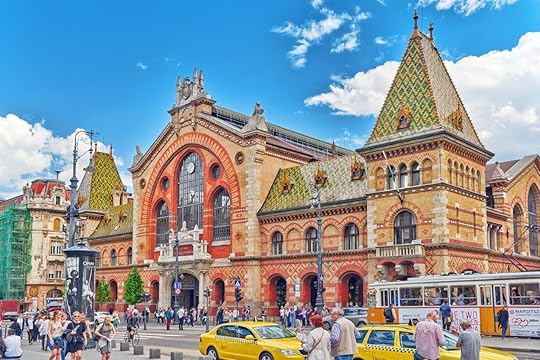
There’s something magical about discovering the local food that every country has to offer. Finding it isn’t always easy, though. You can search for Michelin-starred restaurants or try to find what’s popular on Yelp, but the best way to have an authentic, delicious, and cost-effective gastronomic adventure is to check out a local food market. Travelers to Europe are in luck as there are markets located in popular destinations all over the continent. Some are well known and have been established for decades while others are more recent establishments, often tailored towards travelers. These are the nine best food markets in Europe you don’t want to miss.
1. Great Market Hall in Budapest, Hungary

Photo: gvictoria/Shutterstock
This is the place to go when you want a side of gorgeous architecture with your goulash. The Great Market Hall in Budapest dates back to the 1890s, but it was completely rebuilt in the 1990s. It’s popular with locals as well as tourists. Here, you’ll find local cheese, meat, Tokaj wine, and plenty of famous Hungarian paprika. Don’t leave without picking up a slice of dobos torte, a sponge cake made with chocolate and caramel that’s popular throughout Hungary. It’s the perfect day activity before hitting up Budapest’s famous ruin bars.
2. Mathallen Oslo in Oslo, Norway

Photo: Mathallen Oslo/Facebook
Oslo isn’t cheap. You’re likely to burn through your kroner fairly quickly no matter where you go out to eat, and visiting Mathallen is no different. Some things are worth the cost, though. Located in the trendy Vulkan neighborhood that borders Grünerløkka, the market caters to tourists, locals, and professional chefs. Pretty much everyone comes here because there’s a little something for everyone. Make sure to try out the local fish specialties, and check online for events that might be happening during your visit.
3. Dezerter Bazaar in Tbilisi, Georgia

Photo: MicheleB/Shutterstock
The Dezerter Bazaar is not housed in a fancy building, nor does it offer restaurants to sip your Prosecco. Here, it’s all about the food. There’s an array of treats from around the country of Georgia, including handmade bread, fresh fish, fruit and vegetables, cakes, and famous Georgian wine. If you look hard enough you might even come across some fiery chacha. It’s a bounty that’ll make you understand why Georgia is the next must-see destination for wine and food lovers. To make it a truly local experience, stock up on orange wine and grab a few khinkali dumplings and cheese-stuffed khachapuri bread.
4. Rue Montorgueil in Paris, France

Photo: Kiev.Victor/Shutterstock
We couldn’t make a list of the best food markets in Europe without including France. While technically a pedestrian street and not a food market, Rue Montorgueil is so packed with restaurants, cafes, and stalls that it belongs on every food market destination list. It’s located in the Les Halles area of Paris. With plenty of side streets to explore along with the main walkway, you won’t be disappointed with the sheer array of Parisian goods on offer — and of course there are plenty of places to sample the best French food and wine pairings. If you’re keen on French pastries, make sure you visit Pâtisserie Stohrer, one of the oldest bakeries in the country.
5. Dimotiki Agora in Athens, Greece

Photo: Baloncici/Shutterstock
Athens’ Dimotiki Agora offers fish of all shapes and sizes by the bucketload. Wandering the aisles, you’re sure to find everything from the smallest whitebait to the largest grouper. Pro-tip: Wear closed-toe shoes unless you want to squish around in fish guts and scales. The surrounding neighborhood has a massive array of shops selling sweets, nuts, and dried herbs from around Greece, and there are plenty of places to stop and grab a bite to eat throughout the market.
6. Albert Cuyp Market in Amsterdam, Netherlands
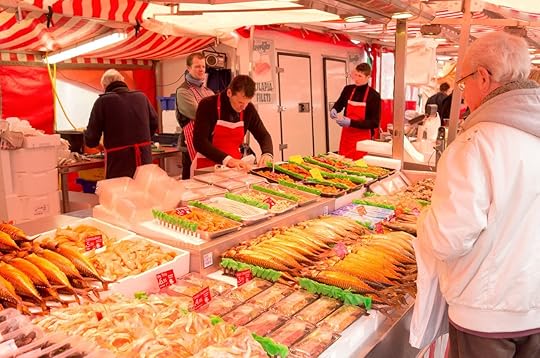
Photo: Martien van Gaalen/Shutterstock
Originally opened in 1904, the Albert Cuyp Market has more than 250 stalls in Amsterdam’s De Pijp neighborhood. There’s an eclectic mix here, and you’re sure to find both the familiar and the unknown. You’ll also find a huge range of clothes, souvenirs, shoes, luggage, and more. Grab a Dutch herring to snack on and then buy a but a stroopwafel. Don’t forget finding a nearby bar for a traditional shot of genever to wash it all down.
7. La Boqueria in Barcelona, Spain
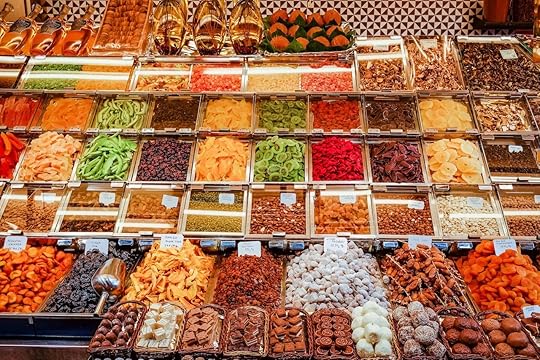
Photo: Alessio Catelli/Shutterstock
One of the most famous food markets anywhere in the world, La Boqueria is located just off the famous Las Ramblas, right in the center of Barcelona. Fully enclosed since 1914, it’s home to many third- and fourth-generation sellers hawking everything from vegetables, meat, fish, candies, herbs, and spices. Walking through, expect to experience a cacophony of noises, smells, and tourists. Don’t leave without eating some tapas and taking some meat and cheese to go. Try to visit before 2:00 PM to avoid the worst of the crowds.
8. Piaţa Obor in Bucharest, Romania
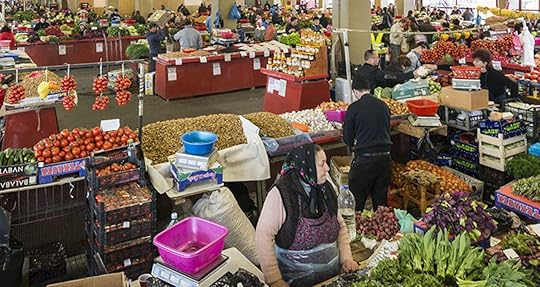
Photo: Piaţa Obor
With everything from wild mushrooms to sauerkraut, the Piata Obor market not only provides local residents with food, but it also supplies fresh produce to some of the city’s best restaurants and cafes. The market specializes in local foods, and the large modernist building is one of the best places in the city to sample mititei sausages. There is also an obscure range of household goods on offer here — handy if you’re in desperate need of a cheap cooking pot or ironing board.
9. Torvehallerne in Copenhagen, Denmark
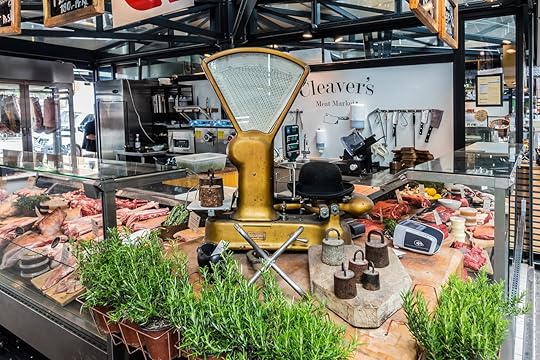
Photo: Kiev.Victor/Shutterstock
With 60 stands selling every food item you can imagine, it’s hard to go wrong at Torvehallerne in Copenhagen. Whether you’re looking for delicious gourmet chocolates or artisan salts — or simply want to grab a wine or beer in a gorgeous setting — you can find it here. The market is particularly known as a great spot for grabbing breakfast, but if you’re looking for a late-night sweet treat, you won’t come up short. 

More like this: The 10 most epic food halls in the US
The post The 9 best food markets in Europe you need to visit appeared first on Matador Network.

Tree stump becomes mini library

When you have a massive dead tree stump in your front yard, your instinct might be to cut it down. When you’re a librarian, however, your instincts are somewhat different. Sharlee Armitage Howard, a librarian at the Coeur d’Alene Public Library in Idaho, decided to turn this 110-year-old tree stump on her property into a miniature library. She is continuing the trend of Little Free Libraries where people are encouraged to borrow books from local street boxes and return them at their own leisure.

Photo: Sharalee Armitage Howard/Facebook
Howard, however, might have one of the most elaborate Little Free Libraries in the world. With stone steps, a glass door, welcoming lighting, and dentil blocks in the form of miniature books above the entryway, the library truly projects a unique and impressive aesthetic. When she first announced her project via Facebook, it got a pretty overwhelming response. Her initial post from last month now has over 85,000 likes, 13,000 comments, and 101,000 shares.

Photo: Sharalee Armitage Howard/Facebook
Like all other nonprofit Little Free Libraries, Howard’s tree library is aimed at fostering a love of literature in the community. There are over 75,000 registered Little Free Libraries in 88 countries around the world, and each is unique in its own right. If you really want to take a literary-themed trip around the world, visiting each Little Free Library would be an epic way to do it.
You can get an even closer look at Howard’s tree library in this video, created by local news station KREM. 
H/T: My Modern Met

More like this: 6 libraries around the world completely dedicated to women
The post Librarian converts giant tree stump into a miniature library appeared first on Matador Network.

Healthiest cuisines in the world

Every year, people enter the new year with New Year’s resolutions to eat healthier, lose weight, and finally be in shape when summer rolls around. Then we’re lucky if the first week passes and we haven’t already stuffed our faces with six pounds of leftover Christmas chocolate because salads seem bland. If you can relate, get some inspiration for spicing up your diet with some pretty delicious — and incredibly healthy — dishes from around the world. Sure, you could meal prep with chicken, broccoli, and carrot sticks, or you could indulge in kimchi from South Korea or authentic Israeli falafel, thereby enjoying some flavor and staying healthy at the same time. Here are the countries with the healthiest cuisines in the world.
1. Chad
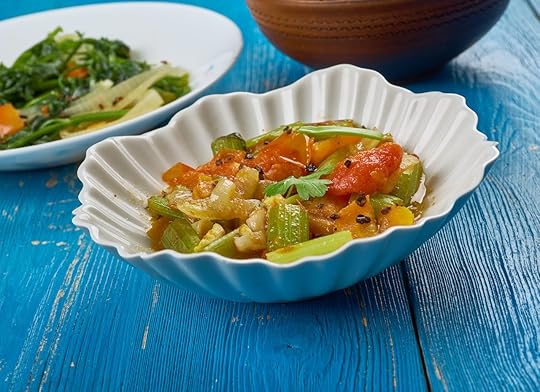
Photo: Fanfo/Shutterstock
When you think of countries internationally known for their cuisine, Chad might not immediately spring to mind. But it should. Chad is a diverse country with 140 ethnic groups (and a diverse food landscape to match), yet a few dishes are enjoyed throughout. Daraba is a common meat-free dish made with sweet potato and okra. Boule, the country’s national dish, is a thick porridge absolutely packed with vital nutrients. The porridge is prepared with healthy grains like maize, millet, and sorghum, along with ingredients like okra, dried pimento, guava, mangoes, cassava, mutton, goat, and fish — all of which are familiar to healthy eaters and staples of a balanced diet.
2. Greece

Photo: BorisKotov/Shutterstock
The food from Greece is what you imagine when you think of a healthy Mediterranean diet that’s low in saturated fat and red meat. Healthy eaters worldwide recognize the nutritional value of a Greek-inspired diet, and you can find commercial representations like Greek salads and Greek yogurt in pretty much every grocery store. Traditional dishes are often heavy on the legumes, vegetables, fish, chickpeas, peppers, and sardines. The Greeks don’t forgo red meat altogether but instead consume beef, pork, and lamb in moderation. Just dip that meat in hummus and tzatziki instead of BBQ sauce.
3. South Korean

Photo: TMON/Shutterstock
South Korean cuisine is one of the healthiest in the world. Classic dishes are made with kimchi (salted and fermented cabbage and other vegetables), tofu, fish, noodles, and egg. People in the country maintain an incredibly low-fat diet. Consider bibimbap, a bowl of rice topped with greens, chili paste, soy, egg, and meat that’s mixed together just before eating. Meat is served in moderate portions, especially by American standards. On average, South Koreans eat about 16 pounds of beef per year compared to the 67 pounds consumed by the average American.
4. Israel
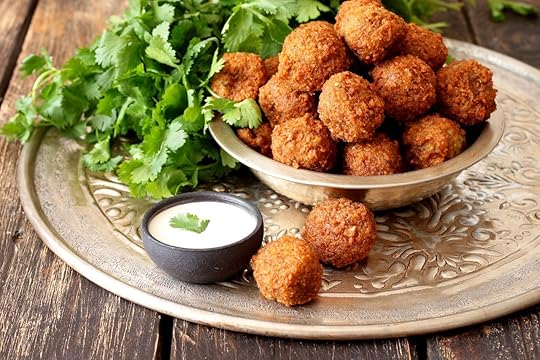
Photo: Viktoria Hodos/Shutterstock
People in Israel have a diet similar to Greek and other Mediterranean cuisines that’s heavy in legumes, eggplant, and olive oil. An Israeli diet is pretty easy to stick to these days as the food is both delicious and practically everywhere. Falafels, for example, can be found at food trucks in pretty much every major city in America and are typically made from chickpeas, parsley, garlic, and spices. Ingredients like tahini are high in vitamins and minerals. The food is heavily inspired by the 13 percent of the country that’s vegetarian — the second highest percentage of vegetarians in the world.
5. Sweden
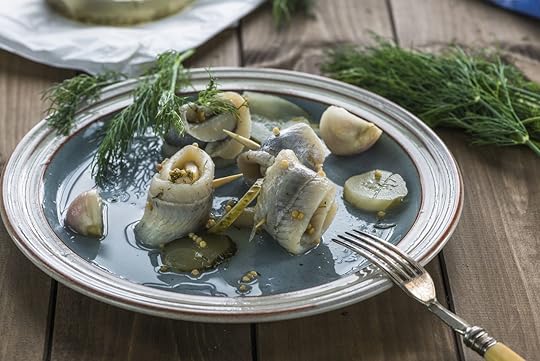
Photo: BBA Photography/Shutterstock
If fruits and vegetables aren’t really your thing, you’ll probably want to give Sweden’s cuisine a try. Unlike many of the other places on this list, Swedish food is fairly light in fruits and vegetables. Instead, dishes generally revolve around fish, bread, berries, and dairy. The Swedish diet is packed with fiber and antioxidants, which go a long way toward burning fat. One of the country’s most iconic dishes is called gubbröra, an egg-anchovy salad served on bread with a name that translates to “old man’s mix.” Pickled herring is a staple of every smorgasbord. Sweden’s obesity rate is only 11 percent, and its average life expectancy is an impressive 81 years. Consider it proof that you don’t need to eat salads every day to be healthy.
6. Egypt
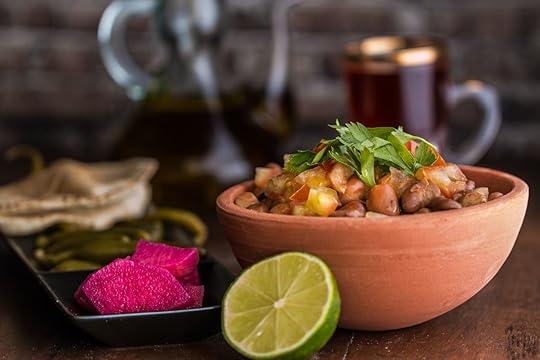
Photo: Momen Khaiti/Shutterstock
The Mediterranean wins out again. People in Egypt follow a diet similar to the rest of the eastern Mediterranean that’s supplemented by all the food that grows along the Nile River. There’s falafel, rice wrapped in grape leaves, legumes, and moderate portions of meat. There’s no skimping on breakfast here, either. Ful Mudammas is a popular Egyptian breakfast consisting of fava beans, tahini, hard-boiled eggs, and whole grain pita. The beans are rich in fiber, and tahini is full of healthy fat.
7. India

Photo: gkrphoto/Shutterstock
Traditional, authentic dishes from India are some of the healthiest you can find and make. The country has the highest percentage of vegetarians (38 percent) in the world, and many of the meals reflect that. Curries, the English word for meat or vegetables cooked in Indian spices and served with rice or bread, are high in metabolism-boosting spices. And there’s much, much more to Indian curries than chicken tikka masala. 

More like this: How to eat healthy while traveling, according to three nutritionists
The post The 7 healthiest cuisines in the world you should learn to cook appeared first on Matador Network.

What to do in the Canary Islands
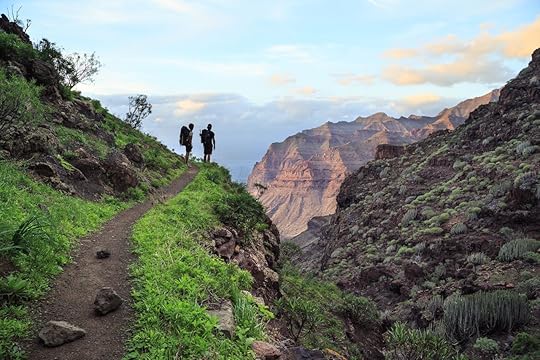
The Canary Islands are mostly known as a tropical vacation getaway. This archipelago of seven main islands and several smaller ones, owned by Spain but lying off the coast of West Africa, attracts European travelers looking for sun, sand, and, of course, an epic party scene. Many travelers, however, miss out on what makes the islands truly unique. Unlike most Caribbean islands, the Canaries are rugged and volcanic, with black sand beaches and even desert-like landscapes.
Sure, you could book a resort in Playa de las Americas, the biggest resort town on the most popular island, Tenerife. There, you could spend your week lounging on the beach, buying expensive souvenirs, and clubbing until 6:00 AM. But without venturing off the beaten path, you’d miss out on an authentic Canary Islands experience. From exploring Tenerife’s active volcano to surfing epic waves, there are more thrills and adventures on this archipelago than meet the eye. Here’s what to do.
Hike an active volcano

Photo: nodff/Shutterstock
The island of Tenerife is home to Mount Teide, an active volcano and the highest peak in Spain. At 12,198 feet, it’s the world’s third-tallest volcanic structure. Teide’s last eruption was in 1909, so while summiting the volcano is no easy excursion, it’s perfectly safe. To add a dose of adventure to your Canary Islands trip, hike one of the several footpaths up to the peak. From there, you can look down into Teide’s volcanic crater, and have a panoramic view of the surrounding islands. Just be sure to obtain the special permit you’ll need to hike all the way to the peak, which you can get on the official booking website. The mountain is also home to the Teide Observatory, an astronomical observatory with solar, radio, and microwave telescopes, perfectly situated at high altitude for clear night-sky viewing.
If hiking is too arduous for you, you can always take a cable car, or even drive. Given the winding nature of the road, however, and lack of guardrails along the precipitous edges, driving can feel as adventurous as hiking. Organized tours can be booked here.
An epic surf scene

Photo: Ariane Hoehne/Shutterstock
The Canary Islands might not immediately come to mind when you think of the world’s greatest surfing destinations, but they should. Due to big Atlantic swells meeting offshore winds from Africa, the Canary Islands have some prime reef and sandy beach breaks on several of its main islands. Fuerteventura, the archipelago’s second largest island, has one of the more solid collections of reef breaks, and Tenerife is famous for the La Izquierda wave, though locals can get territorial about sharing it with others. Tenerife is also a great surf location in the wintertime, when the island’s north shore sees some pretty impressive swells. If you’re not quite confident enough to hit the waters on your own, there are plenty of surf lessons available for beginners.
Delicious local seafood

Photo: Andrei Bortnikau/Shutterstock
There is certainly no shortage of fine dining options in the Canary Islands, especially in Playa de las Americas. But if you’d rather eat somewhere that isn’t overflowing with ravenous British tourists, there are some great local restaurants that give you a more authentic feel. Since the islands have a huge fishing culture, the seafood is fresh and available pretty much everywhere. Vieja (parrotfish) and chipirones (small squid) are stapes of the Canary Islands culinary scene. To get really adventurous, try choco (cuttlefish) — with alien-esque tentacles — or morena (eel).
One of my favorite seafood spots on Tenerife is Los Abrigos, a small fishing village tucked away on the south side of the island. I learned about the town from my Airbnb owner, who rolled out a wrinkled map, pointed to the nearby village, and said, “It’s getting dark, so you should take a flashlight. Wait.” He left the kitchen and poked his head outside, then returned. “Forget the flashlight. It will be a full moon. Twelve minute walk. When you’ve arrived, go to Restaurante Los Abrigos. That’s Paolo’s restaurant. Oldest fisherman on Tenerife.”
With his vague directions in mind, we crossed a rocky valley to Los Abrigos. Sure enough, it was home to colorful fishing boats and some of the best seafood restaurants in Tenerife. If you’ve never had octopus before, this is the place to try it. The Galician octopus and mussels at Restaurante Los Abrigos (Paolo’s restaurant) was my favorite meal of the trip. And whether he was simply feeling generous, or because our Airbnb owner tipped him off, Paolo gave us a free shot of limoncello after the meal.
A desert landscape
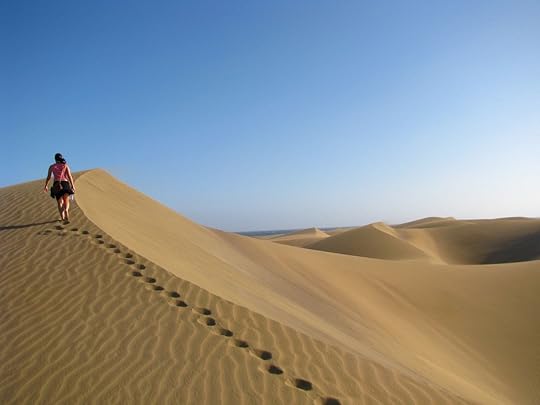
Photo: ESK Imagery/Shutterstock
You don’t have to venture to the Sahara to get an exhilarating desert experience. The island of Gran Canaria is famous for its Maspalomas Dunes, rolling along the coast for over a thousand acres. One of the most easily accessible dune landscapes on the planet, these dunes are essentially a miniature desert, with scarce vegetation and endless hills rising and falling. The dunes are large enough to give you an authentic desert feel, but not so vast that you can actually get lost if you’re exploring on your own. Although dune buggies and similar vehicles are banned on the dunes, it’s possible to book camel rides. 

More like this: Tropical islands suck. Go to these 7 islands instead.
The post How to explore the rugged side of the Canary Islands appeared first on Matador Network.

JetBlue ‘Hamilton’ sweepstakes
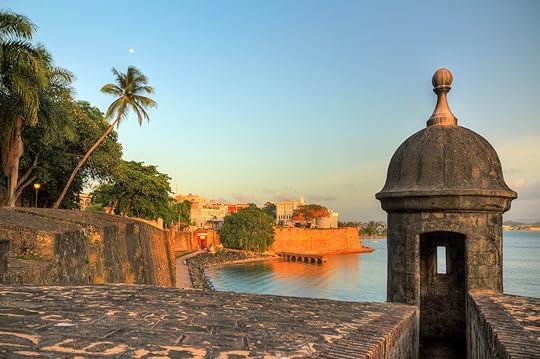
Seeing Hamilton on Broadway is great, but seeing the hit musical in Puerto Rico is better. Starting January 10, JetBlue is offering a daily sweepstakes that might just land you free show tickets, as well as a free last-minute vacation to Puerto Rico. As a sponsor of Hamilton on the Caribbean island, JetBlue is giving five winners — and a companion of their choice — a free flight to Puerto Rico, premium tickets to Hamilton, and a one-night hotel stay in San Juan. The retail value of each grand prize, including airfare, show tickets, and accommodation, is $1,575.
Tickets will be awarded for shows on January 12-17, with no show occuring on January 14. To enter, visit the official website any time between January 10-16, and submit the online registration form. You can submit one entry per day to qualify, with winners selected at random at the end of each day. It’s important to note that winners will be expected to fly out of JFK airport on a 5:40 AM flight on the day of the performance. Since transportation to JFK is your own responsibility, and you’ll be leaving on relatively short notice, you might only want to apply if you can access JFK fairly easily. 

More like this: The coolest Airbnb experiences in the Caribbean
The post JetBlue will fly you to Puerto Rico for free to see ‘Hamilton’ appeared first on Matador Network.

Matador Network's Blog
- Matador Network's profile
- 6 followers



